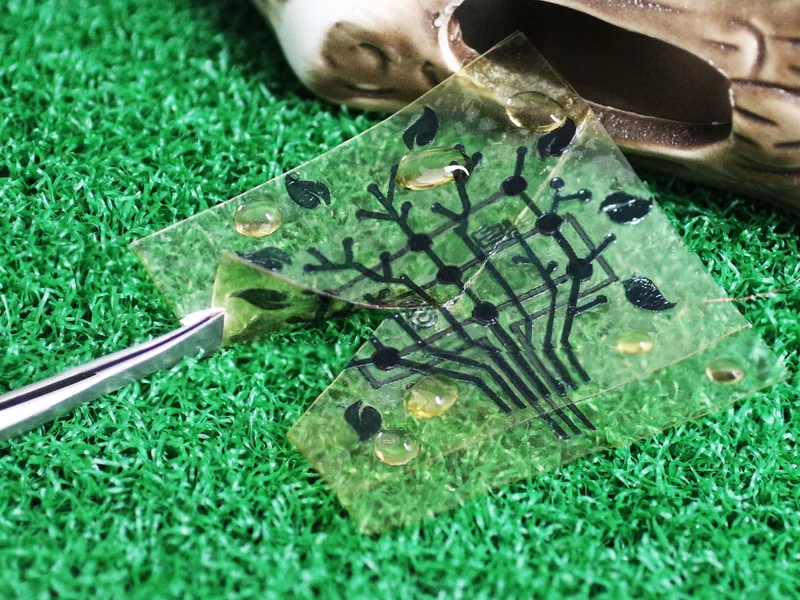Cosmetic clinics have become a hub for a wide range of aesthetic treatments designed to enhance beauty, address skin concerns, and promote overall well-being. With advancements in technology and techniques, these clinics offer innovative solutions tailored to individual needs. Discover essential waxing tips and information at Waxed by Dak. From pre-wax prep to post-care advice, ensure a smooth and comfortable experience whether you’re new to waxing or a returning client.
This article explores some of the most popular treatments available at cosmetic clinic Hampton, highlighting their benefits, processes, and considerations.
1. Botox and Dermal Fillers
Botox
- Purpose: Botox is a neurotoxin used to reduce the appearance of wrinkles and fine lines by temporarily paralyzing the underlying muscles. It is commonly applied to areas such as the forehead, crow’s feet, and frown lines.
- Procedure: The treatment involves a series of small injections into the targeted muscles. The procedure is quick, typically taking about 10-15 minutes, with results visible within a few days.
- Benefits: Botox effectively smooths out wrinkles and prevents new ones from forming. The results can last for three to six months, and the treatment requires minimal downtime.
- Considerations: It’s important to consult with a qualified practitioner to ensure proper technique and minimize the risk of side effects, such as bruising or temporary drooping.
Dermal Fillers
- Purpose: Dermal fillers are used to enhance the face’s moisture, volume, and shape. They can deal with problems like nasolabial folds, thin lips, and hollow cheeks.
- Procedure: The treatment involves injecting a gel-like substance, often hyaluronic acid, into specific areas of the face. The process usually takes about 30 minutes and may require local anesthesia.
- Benefits: Dermal fillers provide immediate results, enhancing facial features and reducing the appearance of wrinkles. The effects can last from six months to two years, depending on the type of filler used.
- Considerations: As with Botox, choosing a skilled practitioner is crucial to avoid complications. Possible side effects include swelling, bruising, and in rare cases, lumps or asymmetry.
2. Laser Treatments
Laser Hair Removal
- Purpose: Laser hair removal targets hair follicles with concentrated light to reduce or eliminate unwanted hair. It is suitable for various body areas, including the legs, underarms, and facial hair.
- Procedure: The treatment involves using a laser device that emits light absorbed by the pigment in the hair. Typically, several sessions are needed to get the best outcomes.
- Benefits: Laser hair removal offers long-term hair reduction with minimal discomfort. It can significantly decrease the need for shaving, waxing, or other temporary hair removal methods.
- Considerations: The effectiveness can vary based on hair color and skin type. It’s essential to avoid sun exposure before and after treatments to prevent pigmentation issues.
Laser Skin Resurfacing
- Purpose: Laser skin resurfacing improves skin texture and tone by removing damaged outer layers and stimulating collagen production. It is used for treating acne scars, sun damage, and wrinkles.
- Procedure: The treatment involves directing a laser beam at the skin to remove thin layers and encourage new skin growth. Depending on the type of laser used, the procedure can range from non-ablative (minimal downtime) to ablative (more intensive with longer recovery).
- Benefits: Laser skin resurfacing enhances skin appearance, reducing wrinkles, scars, and pigmentation. Results are usually noticeable within a few weeks, with full effects appearing over several months.
- Considerations: The treatment may involve some discomfort and requires proper post-procedure care to promote healing and avoid complications.
3. Chemical Peels
Light Peels
- Purpose: Light chemical peels use mild acids, such as alpha-hydroxy acids (AHAs), to exfoliate the outer layer of skin. They are effective for treating minor skin issues, such as dullness and uneven texture.
- Procedure: The peel solution is applied to the skin for a short period before being neutralized and removed. The treatment is relatively quick and often performed during a lunch break.
- Benefits: Light peels provide a refreshed appearance with minimal downtime. They can improve skin radiance and smoothness, making them suitable for regular maintenance.
- Considerations: For best outcomes, more than one session could be required. Patients should avoid sun exposure and follow post-peel care instructions to prevent irritation.
Medium and Deep Peels
- Purpose: Medium and deep chemical peels use stronger acids, such as trichloroacetic acid (TCA) or phenol, to target deeper layers of skin. They are used for more significant issues, including deeper wrinkles and severe sun damage.
- Procedure: These peels involve a more extended application time and require a longer recovery period compared to light peels. The process removes damaged skin layers and stimulates collagen production.
- Benefits: Medium and deep peels offer more dramatic improvements in skin texture and tone. They can significantly reduce wrinkles, age spots, and acne scars.
- Considerations: Recovery time can be several weeks, during which the skin may peel, redden, and become sensitive. Following post-peel care is crucial for optimal healing.
4. Microdermabrasion and Microneedling
Microdermabrasion
- Purpose: Microdermabrasion is a non-invasive exfoliation technique that removes dead skin cells to reveal fresher skin underneath. It is used to improve skin texture and treat minor imperfections.
- Procedure: The treatment involves using a device that sprays tiny crystals onto the skin while simultaneously vacuuming away the exfoliated cells. It is a quick procedure with no downtime.
- Benefits: Microdermabrasion enhances skin radiance and smoothness, making it an excellent option for maintaining a youthful appearance. It can also improve the effectiveness of other skincare products.
- Considerations: Regular treatments may be necessary for sustained results. Patients with sensitive skin or certain skin conditions should consult with a professional before undergoing the procedure.
Microneedling
- Purpose: Microneedling involves using a device with fine needles to create micro-injuries in the skin, stimulating collagen production and improving skin texture. It is effective for treating acne scars, stretch marks, and fine lines.
- Procedure: The procedure involves applying a topical numbing cream before using a microneedling device on the skin. Post-treatment redness and minor discomfort are common.
- Benefits: Microneedling promotes skin rejuvenation and can improve the appearance of scars, wrinkles, and overall skin texture. After a few weeks, results usually become apparent as collagen production rises.
- Considerations: It can take several sessions to get the best effects. In order to reduce the chance of infection and encourage healing, it is imperative that you adhere to the post-treatment care instructions.
5. Body Contouring
Cryolipolysis (CoolSculpting)
- Purpose: Cryolipolysis, commonly known as CoolSculpting, targets and freezes fat cells to reduce localized fat deposits. It is used for body contouring and achieving a more sculpted appearance.
- Procedure: The treatment involves applying a cooling device to the targeted area, which crystallizes the fat cells. Over time, the body gets rid of these cells on its own.
- Benefits: CoolSculpting offers a non-invasive option for fat reduction with minimal downtime. Results gradually become visible over a few months as fat cells are metabolized.
- Considerations: The treatment is not a weight-loss solution but rather a method for targeting specific areas of fat. Some patients may experience temporary numbness or bruising.
Radiofrequency (RF) and Ultrasound
- Purpose: Radiofrequency and ultrasound body contouring treatments use energy to heat and stimulate collagen production, tightening the skin and reducing fat. They are often used for skin tightening and body sculpting.
- Procedure: These treatments involve applying energy through a device to target deeper skin layers. The procedure is generally comfortable, with minimal discomfort.
- Benefits: RF and ultrasound treatments offer non-invasive options for improving skin firmness and reducing fat. Results may be visible after a series of sessions.
- Considerations: The effectiveness of these treatments can vary based on individual factors, such as skin type and treatment area. Maintenance sessions may be required to sustain results.
Visit Cosmetic Clinics
Cosmetic clinics provide a wide range of treatments using specialized equipment like a Skin Tightening Device, laser resurfacing machines, RF microneedling devices, and tools for injectable fillers and Botox. These advanced technologies help enhance appearance, address various skin concerns, and support overall well-being, offering effective solutions for those looking to rejuvenate and maintain healthy, youthful skin. If you’re considering botox las vegas, WOW Health & Beauty Medical Spa offers safe and effective treatments to help you achieve a refreshed look. From non invasive procedures like Botox and dermal fillers to advanced treatments such as laser skin resurfacing and body contouring, the options available cater to various needs and preferences. Understanding the benefits, procedures, and considerations associated with each treatment can help individuals make informed decisions and achieve their desired outcomes. Consulting with a qualified cosmetic professional is essential to ensure that treatments are tailored to individual needs and performed safely.





